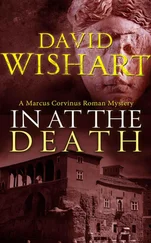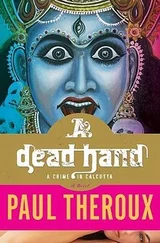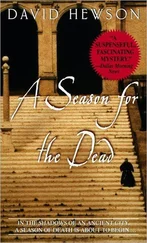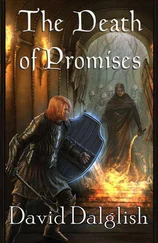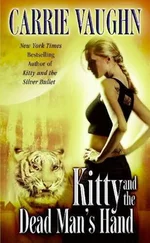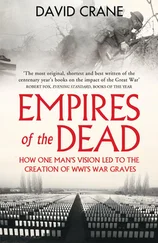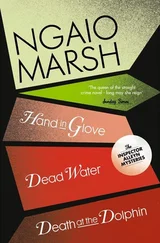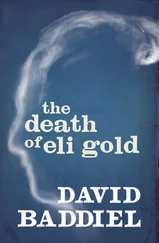5 Gorbachev had already imposed a unilateral moratorium on Soviet nuclear tests, and used the January 15 announcement to extend it.
6 “Statement by M. S. Gorbachev, General Secretary of the CPSU Central Committee,” Izvestia , Jan. 16, 1986, BBC Summary of World Broadcasts, Jan. 17, 1986. Time magazine reported on the Vremya broadcast, Jan. 27, 1986.
7 Anatoly Chernyaev, My Six Years with Gorbachev (University Park, Pa.: University of Pennsylvania Press, 2000), pp. 45–46, and diary, Jan. 18, 1986.
8 George Shultz, Turmoil and Triumph: My Years as Secretary of State (New York: Charles Scribner’s Sons, 1993), pp. 699–714; and Don Oberdorfer, From the Cold War to a New Era (Baltimore: Johns Hopkins University Press, 1998), pp. 156–168.
9 Jack F. Matlock Jr., Reagan and Gorbachev , p. 178. David Hoffman and Walter Pincus, “President ‘Grateful,’ Aides Cautious on Soviet Arms Control Proposal,” Washington Post , Jan. 17, 1986, p. A1. David Pace, AP, Jan. 28, 1986, “Sen. Nunn Wary of Gorbachev Arms Proposal.”
10 Reagan diary, Jan. 15, 1986.
11 Robert M. Gates, From the Shadows: The Ultimate Insider’s Story of Five Presidents and How They Won the Cold War (New York: Simon & Schuster, 1996), p. 377.
12 Reagan diary, Feb. 3, 1986.
13 The call came on Jan. 31, 1986. Chernyaev diary, Jan. 18 and Feb. 1, 1986.
14 Robert D. English sums up Chernyaev’s life and times in his introduction to My Six Years . The author is also indebted to Svetlana Savranskaya for additional information.
15 An edited compilation of their notes was published in 2006, V Politburo TsK KPSS: Po Zapisyam Anatolia Chernyaeva, Vadima Medvedeva, Georgiya Shakhnazarova, 1985–1991 (Moscow: Alpine Business Books, 2006).
16 See Mikhail Gorbachev: Selected Speeches and Articles (Moscow: Progress, 1987), p. 341.
17 National Security Decision Directive 196, Nov. 1, 1985.
18 V Politburo , p. 32.
19 United States Nuclear Tests: July 1945 through September 1992 , Department of Energy, Washington, D.C., DOE/NV-209 (Rev. 14), Dec. 1994.
20 Chernyaev, pp. 55–57. Some additional quotations from Chernyaev’s notes, not contained in the book, were provided by Svetlana Savranskaya.
21 Grigori Medvedev, The Truth About Chernobyl (Basic Books, 1991), Evelyn Rossiter, trans.; Piers Paul Read, Ablaze: The Story of the Heroes and Victims of Chernobyl (New York: Random House, 1993); and Zhores Medvedev, The Legacy of Chernobyl (New York: W. W. Norton & Co., 1990). Also see the extensive work of the United Nations Chernobyl Forum Experts Group, including “Environmental Consequences of the Chernobyl Accident and Their Remediation: Twenty Years of Experience,” available at http://www.iaea.org/NewsCenter/Focus/Chernobyl/ . For a technical account of the reasons for the accident, see “INSAG-7: The Chernobyl Accident, Updating of INSAG-1,” Safety Series No. 75-INSAG-7, IAEA Safety Series, International Atomic Energy Agency, Vienna, 1992.
22 Zhores Medvedev, p. 24. Valery Legasov, an academician and deputy director of the Kurchatov Institute in Moscow, who served on an early response team, later listened to tape recordings of the operators’ telephone conversations. This exchange was recorded on the tapes. Two years after the disaster, Legasov committed suicide. The tape transcripts were found in his safe.
23 Grigori Medvedev, p. 74.
24 “Urgent Report,” A. N. Makukhin, First Deputy Director, Ministry of Energy and Electrification, April 26, 1986, No. 1789-2c, Volkogonov Collection, Library of Congress, from Archive of the President of the Russian Federation, Reel 18, Container 27.
25 These comments were made on the twentieth anniversary of the accident. See BBC News, April 24, 2006, at http://news.bbc.co.uk/go/pr/fr/-/2/hi/europe/4918940.stm .
26 Chernyaev, p. 65.
27 V Politburo , p. 41.
28 Dmitri Volkogonov, Autopsy for an Empire: The Seven Leaders Who Built the Soviet Regime (New York: Free Press, 1998), p. 478. Read reports Ligachev argued “for saying as little as possible,” and that a vote was taken in which Ligachev prevailed.
29 “Information about the accident at Chernobyl nuclear power station April 26, 1986,” Fond 89, Hoover. An essential guide to these documents is Larissa Soroka, Guide to the Microfilm Collection in the Hoover Institution Archives; Fond 89: Communist Party of the Soviet Union on Trial (Stanford: Hoover Institution Press, 2001). An hour later, a second TASS statement said the accident was the first ever in the Soviet Union, and noted other accidents in other countries. Read, p. 175.
30 Volkogonov, pp. 478–479.
31 “Ot Sovieta Ministrov SSSR” [From the Council of Ministers USSR], Fond 89, Perechen 53, Delo 2, Hoover Institution.
32 A subsequent account claims the red glow was not the burning core, but a piece that had been blasted loose during the explosion. Alexander R. Sich, “Truth Was an Early Casualty,” Bulletin of the Atomic Scientists , May/June 1996, pp. 32–42.
33 Michael Dobbs, Down with Big Brother: The Fall of the Soviet Empire (New York: Knopf, 1997), p. 160.
34 Fond 89, Perechen 51, Delo 19, Hoover.
35 Reagan diary, April 30, 1986.
36 Fond 89, Perechen 53, Delo 6, Hoover. The memo carries a stamp by the Central Committee indicating it was circulated on May 16, two days after Gorbachev’s televised speech. In an interview in 2008 with Irina Makarova, Gubarev said Gorbachev seemed “absolutely in the dark about what was happening.” Gubarev later wrote a play, Sarcophagus , which suggested that the accident was due to operator and human error, not the design of the reactor.
37 Chernyaev, p. 66. Also see V Politburo , pp. 61–66.
38 Tarasenko, interview, Feb. 3, 2005.
39 Eduard Shevardnadze, The Future Belongs to Freedom (New York: Free Press, 1991), pp. 175–176.
40 Sergei Akhromeyev and Georgi M. Kornienko, Glazami Marshala i Diplomata (Moscow: International Relations, 1992), pp. 98–99.
41 Mikhail S. Gorbachev, Gody Trudnykh Reshenii [Years of Difficult Decisions] (Moscow: Alfa-print, 1993), pp. 46–55.
42 “Chernobyl’s Legacy: Health, Environmental and Socio-economic Impacts,” the Chernobyl Forum, 2003–2005. In another estimate, at least six thousand more died from radiation exposure, and perhaps many more. David R. Marples, “The Decade of Despair,” Bulletin of the Atomic Scientists , May–June 1996, pp. 22–31.
43 Shultz, p. 724.
44 Reagan diary, May 20, 1986.
45 Shultz, pp. 716–717.
46 Chernyaev, p. 83. This was a reference to the nuclear-pumped X-ray laser that was being advocated by Teller, although Reagan did not envision a nuclear program.
47 Reagan, An American Life , p. 661. The Soviets were eager to do parallel experiments.
48 See USSR Nuclear Weapons Tests and Peaceful Nuclear Explosions: 1949 through 1990 Ministry of the Russian Federation for Atomic Energy, Ministry of Defense of the Russian Federation , Russian Federal Nuclear Center VNIIEF, 1996. The U.S. data is from United States Nuclear Tests .
49 Frank von Hippel, Citizen Scientist: From the Environment to Dissent, a Leading Scientist Talks About the Future of the Planet (New York: Touchstone, 1991). An example of their brainstorming came in the first days after the Chernobyl accident. Von Hippel urged Velikhov to distribute potassium iodide tablets to the population, to forestall the uptake of radioactive iodine into the thyroid of people exposed. Velikhov rushed the idea to the Kremlin. On May 1, the Ministry of Foreign Trade was ordered to “urgently sign contracts to purchase from abroad the necessary amount of medications” and the Health Ministry to “examine the received offers.” Protocol No. 3, May 1, 1986, Fond 89, Perechen 51, Delo 19, Hoover. In the end, the advice was not taken out of fear of causing mass panic. Velikhov interview, 2004. According to a later report by the United Nations, radiation doses to the thyroid “were particularly high in those who were children at the time and drank milk with high levels of radioactive iodine. By 2002, more than 4000 thyroid cancer cases had been diagnosed in this group, and it is most likely that a large fraction of these thyroid cancers is attributable to radioiodine intake.” See “Chernobyl’s Legacy,” p. 7.
Читать дальше

